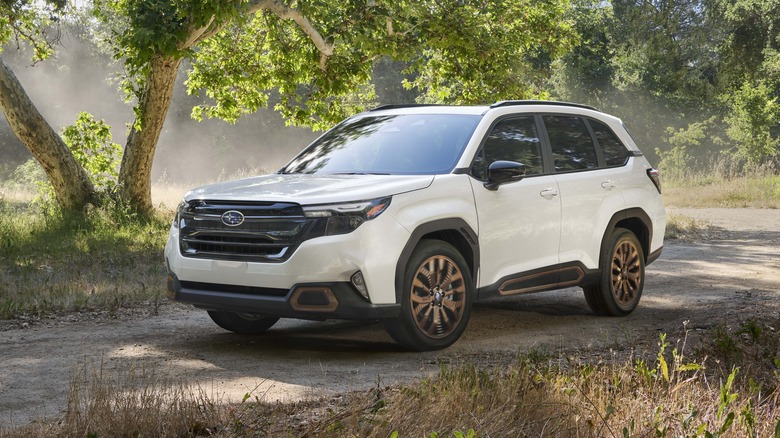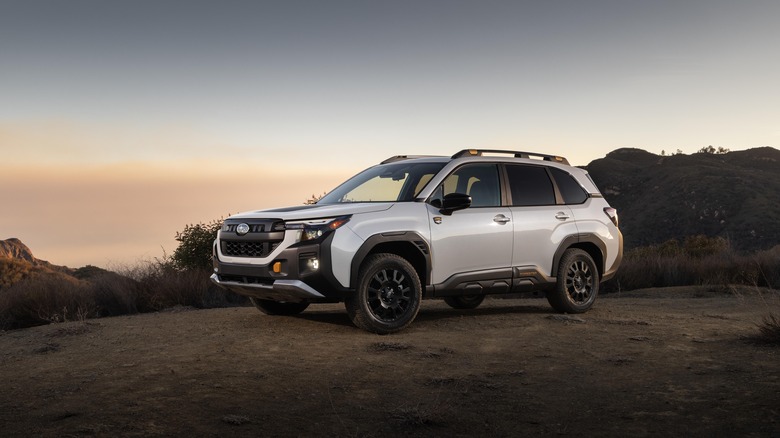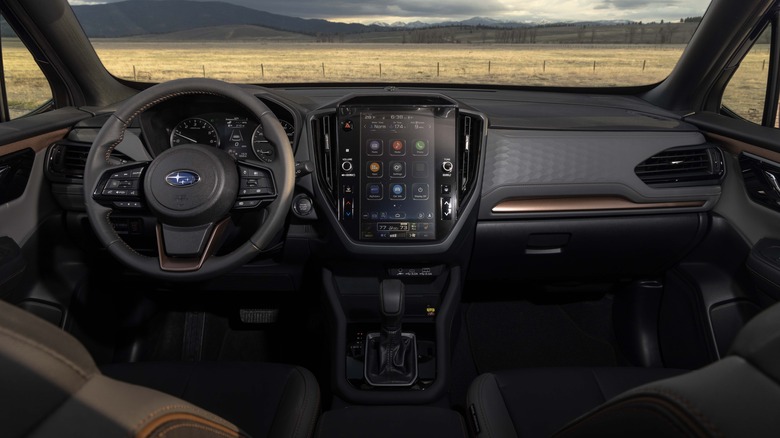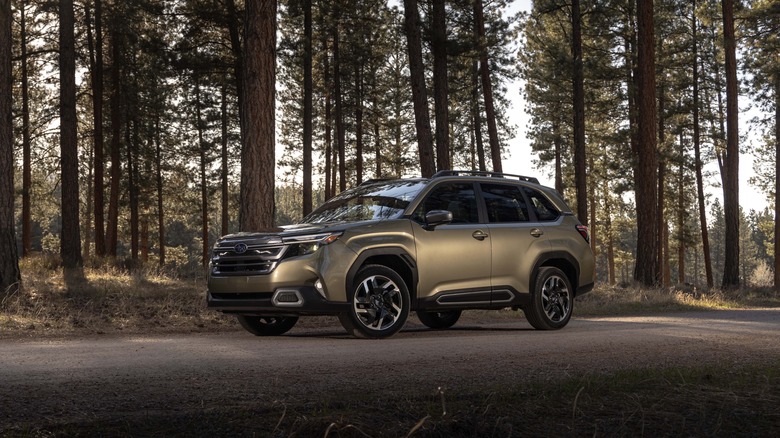What Are The Disadvantages Of A Subaru Forester? A Look At The SUV's Pros & Cons
Subaru has built a massive following among adventure seekers with its reliable and capable SUVs built with trail traversing in mind. One such model is the Subaru Forester, a nameplate currently in its sixth generation. Now, as an automotive mechanical engineer, I've spent over 10 years reviewing and testing cars. In that time, I've managed to test drive several distinct flavors of the Subaru Forester, and all models have proven to be ideal for tackling daily commutes and rugged adventures without any major issues.
In fact, from my experience, the Subaru Forester is one of the most reliable compact SUVs of all time, as it has managed to hold up to the abuses I've thrown at it. This is mainly because of the naturally aspirated four-cylinder Boxer engine and the symmetrical all-wheel drive system, which makes the Forester an excellent choice for light off-roading. However, despite offering plenty of off-road capability in a modern package, the Subaru Forester still comes with compromises, due to its focus on specific attributes.
For instance, while it might shine when it comes to reliability, being able to hit 200,000+ miles with only basic upkeep, it might lag in areas like towing prowess. In fact, if pulling a trailer is a priority, you might find the Forester's limits frustrating, as its upper trim, the Wilderness edition, can only tow 3,000 pounds, way less compared to competitors like the Jeep Cherokee or Land Rover Discovery Sport, which can tow 4,500 and 4,409 pounds, respectively.
The Subaru Forester is more than just dirt-road capable
One primary draw of the modern Subaru Forester is that it takes off-roading seriously. In my experience, adventure seekers who want a car that can go deep into the wilderness and through mud and mountain trails will be happy with the 2025 Subaru Forester. It comes standard with a symmetrical all-wheel-drive system and 8.7 inches of ground clearance for respectable off-road driving.
Of course, not all Forester models are built for serious off-road driving, but upper trims, like the 2025 Wilderness edition, include special features like a dual-function X-Mode with several traction settings for different driving conditions. It also comes with all-terrain tires, designed to help drivers navigate inclement weather and rough terrain. Sure, these knobbly all-terrain tires will affect your fuel efficiency, but they are worth it, as they will deliver lots of grip in off-road situations.
Thrill seekers should look elsewhere
While the Subaru Forester is one of the most capable compact SUVs, it's worth knowing that it's not super powerful. Under the hood is a naturally aspirated 2.5-liter four-cylinder Boxer engine that makes 182 horsepower and 176 lb-ft of torque in the Wilderness trim, and 180 horsepower and 178 lb-ft of torque in other trims. If you push it further, you'll definitely feel the strain.
If you're looking to buy a used compact crossover, you might be inclined to purchase the 2018 Forester. On a positive note, it has a reliable, yet efficient engine and additional performance features. Despite these perks, it's one of the used Subaru models you should steer clear of at all costs, as cruising at higher speed makes the steering a little unpredictable.
When it comes to acceleration, the Forester is a bit sluggish, as it does 0-60 mph in around 10 seconds or less. If you're after responsive acceleration, you'll probably want the turbo engine in Subaru's own Outback, or the ones in rivals like the Mazda CX-5 and Honda CR-V.
Spacious and practical cabin
Besides offering unmatched capability levels, there are other reasons why the Forester has a loyal fan base. One of the most cited reasons is its cargo space. While test driving various Subaru Forester models, I've found this car's cargo space to be firmly among the best in its class. In fact, the 2025 Subaru Forester is perfect for a grocery run, and when you fold the seats flat, you get 74.2 cubic feet of space that will comfortably handle bulky outdoor gear or small furniture.
The cabin is also roomy. It features an elevated seating and ample headroom and legroom – 41 inches headroom and 43 inches of legroom in the front, and 39 inches of headroom and legroom at the rear – which creates an airy, commanding driving position. Another interesting tidbit about the Forester is its intuitive infotainment system. Sure, the base trim only comes with a single USB-A port. However, if you opt for a higher trim, say the Forester Premium, you will get an 11.6-inch display that offers intuitive control over various applications, entertainment features, and navigation.
Noisy interior and hard suspension
While the 8.7-inch ground clearance of the Subaru Forester makes it one of the best off-road vehicles for light off-roading, it also has some drawbacks. Now, that ground clearance makes the Subaru Forester sit higher than most compact SUVs. As a result, once you hit highway speeds, the wind whistling around the tall windows and A-pillars, as well as road-tire noise, becomes loud compared to rivals like the RAV4 or CR-V.
Of course, this might not be a deal-breaker for most drivers, especially daily commuters. However, if you are engaging in a long road trip at speeds of more than 55mph, the lack of sound insulation can be a dealbreaker. In fact, I've found myself turning up the volume on the stereo to compensate, but drivers prioritizing a serene cabin might wish for better sound insulation.
When it comes to off-road adventures, the Subaru Forester will offer immense comfort, mainly because of that aforementioned suspension. Sadly, this feature also comes with a trade-off on the highway. That tuning causes noticeable jolts over city potholes and uneven pavement, which many passengers rarely mention. That's why, if you are like most urban drivers, those harsh impacts might make you opt for softer-riding crossovers like the Hyundai Tucson.




